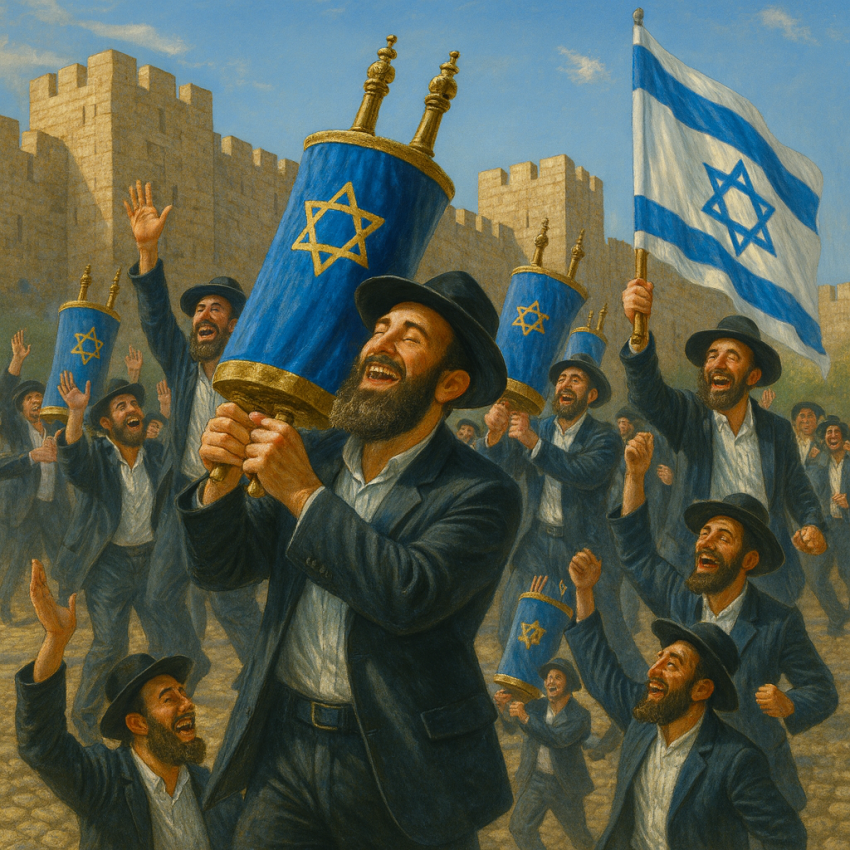It began on Simchas Torah and ended on Simchas Torah. What started as a day of joy, prayer, and dancing in October 2023 became one of the darkest days in modern Jewish history. This year, on the eve of the same holiday, Israel watched the final twenty living hostages come home. What was stolen in terror has returned in tears.
Families gathered in the streets and synagogues, holding candles and flags. Some had been waiting for more than seven hundred days. Others stood for the dead, whose bodies were finally coming home. The celebrations of Simchas Torah, a holiday of endings and beginnings, carried an additional conflicting meanings this year, gratitude, extreme joy and mourning.
The hostages were transferred from Gaza into Israeli custody under the supervision of the International Red Cross. They were immediately taken to hospitals for medical care and reunions with their families. Doctors described them as frail but stable. Many bore the unmistakable marks of captivity, from weight loss to untreated wounds. Their arrival in Israel was broadcast live, and the images of exhausted survivors being lifted from Red Cross vehicles were met with nationwide applause and tears.
Among those released were Bar Abraham Kupershtein, Evyatar David, Yosef Chaim Ohana, Segev Kalfon, Avinatan Or, Elkana Bohbot, Maxim Herkin, Nimrod Cohen, Matan Angrest, Matan Zangauker, Eitan Horn, Eitan Abraham Mor, Gali Berman, Ziv Berman, Omri Miran, Alon Ohel, Guy Gilboa Dalal, Rom Braslavski, Ariel Cunio, and David Cunio. For many Israelis, these names are now carved into national memory. When Omri Miran was reunited with his wife and daughters at Ichilov Hospital, the image became an instant symbol of survival and homecoming.
But the day was not only about the living. Israel confirmed that the remains of multiple hostages were handed over as part of the same deal, with identification continuing at Shura military base. Some of those who had once appeared in Hamas propaganda videos are now listed among the dead. Families of those still unaccounted for continue to wait. At Hostage Square in Tel Aviv, candles burned beside photographs, and the walls were lined with the words “We remember you.” The country exhaled, but not fully.
The release came under a complex ceasefire agreement brokered by the United States, Egypt, and Qatar. In exchange, Israel released nearly two thousand Palestinian prisoners and detainees. Both sides described the exchange as a step toward calm, though the silence in Gaza and the sobs in Israel suggested something less final than peace.
In Jerusalem, Prime Minister Benjamin Netanyahu stood before the Knesset and praised Donald Trump, calling him “the greatest friend the State of Israel has ever had in the White House.” He announced that he would nominate Trump for the Israel Prize, the country’s highest civilian honor. Trump’s visit to Israel coincided with the release, and his address to the Knesset drew sustained applause. He urged Palestinian leaders to abandon terror and at one point turned to Israeli President Isaac Herzog and said, “Do the right thing. Give Bibi a pardon.” The moment blended politics and symbolism in equal measure, and it was impossible to ignore the emotion that swept through the room.
Outside the chamber, the country’s attention was fixed not on politics but on the faces of the returned. Ambulances rolled through streets lined with people waving flags and singing. Soldiers saluted as stretchers passed. Families of the dead stood quietly in the background, clutching framed photos of thier loved ones.
The last time the nation had gathered like this was on the morning of the attack when Israelis awoke to gunfire, kidnappings, and unimaginable scenes of loss. The same holiday that began with horror has now brought a fragile sense of closure. Simchas Torah is a celebration of the end of one Torah cycle and the beginning of another. Today, it carries an additional meaning, not only joy in the scrolls’ completion, but also, the hope that this cycle of blood and captivity has finally ended.
By nightfall, the dancing resumed in some synagogues. Children waved flags beside candles for the dead. The hostages who survived were home. The ones who did not were being brought home. And a nation that began this tragedy on Simchas Torah two years ago, now stands at the same threshold, cautiously and optimistically looking and hoping for a brighter future.

